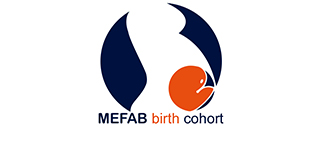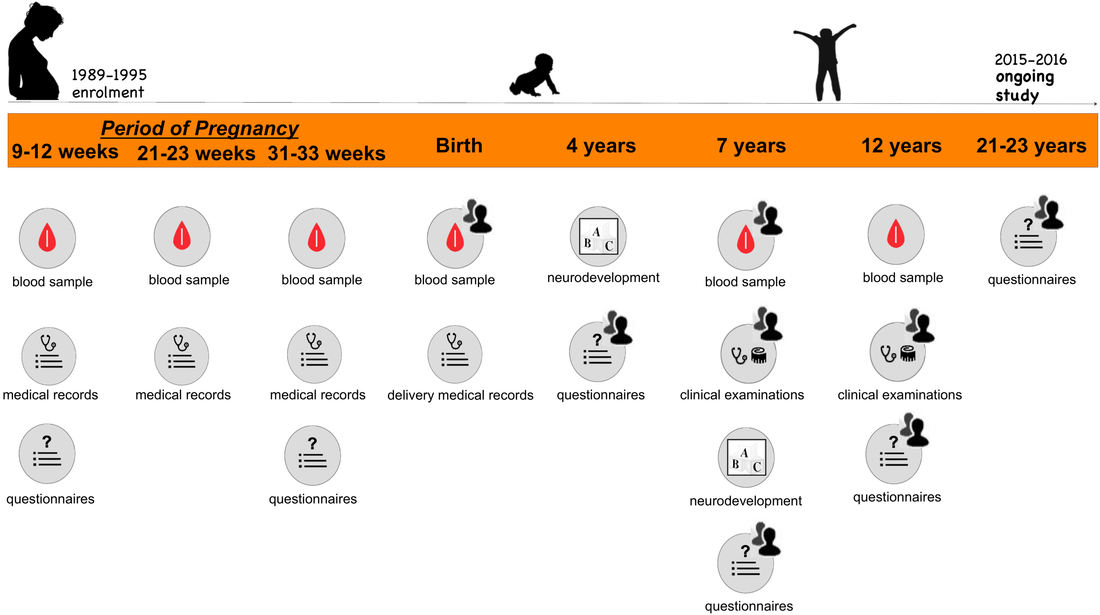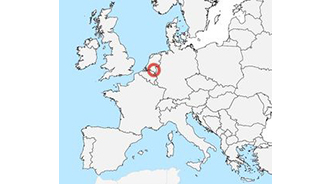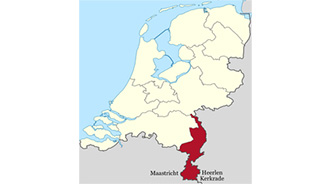Data inventory


Study population and frequency of follow-up
MEFAB is prospectively examining a population sample of pregnant women and their children at the province of Limburg, the Netherlands. Between 1989 and 1995, pregnant women attending three maternity clinics in Limburg were contacted, and 1200 women participate in the study. Eligibility criteria included having a gestational age of less than 16 weeks, having a diastolic blood pressure of less than 90 mmHg, and not suffering from any cardiovascular, neurological, renal, or metabolic disorder.
The first contact was done the first trimester of gestation, at the time of the first antenatal visit. Women were later contacted at the 6th month, the 9th month and immediately after birth. We also completed in-person visits with parents and children in early childhood (median 3.9 years), mid-childhood (median 7.2 years) and late childhood (median age 12.3 years). We are currently conducting a young adult follow-up evaluation (∼21-23 years).
The study has been approved by the Medical Ethics Committee of the University Hospital Maastricht and Maastricht University.
Collection of data
Up to 2015 Essential fatty acid status is the key exposure in this cohort. The fatty acid composition of plasma and erythrocyte phospholipids of pregnant women was assessed at 3 times points during pregnancy (approximately at 14, 22 and 32 weeks of gestation) and immediately after delivery. Additionally, fatty acid measurements were performed in the phospholipids of cord plasma and umbilical artery and vein walls. Mothers and children also provided data on fatty acid composition of their plasma phospholipids at the 7-year follow-up visit.
Extensive questionnaires have been completed on lifestyle (tobacco smoking, medication use, physical activity etc), socioeconomic factors (educational level, breastfeeding, socioeconomic status etc), medical history and psychological factors. Clinical examinations including anthropometry and blood pressure have been performed in both the mother and her offspring. We have also assessed atopy by questionnaire and measured peak flow in mid-childhood. Child neurodevelopment has been assessed at two time points in childhood. Available laboratory analyses include several biochemical analyses (e.g. glucose, insulin, lipids, haematological and inflammatory profile) and genetic polymorphisms (e.g. APOE, PPARγ).
An overview of the available information up to 2015 in MEFAB can be found here.
In 2015 we started conducting a young adult follow-up evaluation. An online general health questionnaire has been completed containing questions about health and disease, physical activity and school performance. Additionally the residential addresses were geocoded and green space and traffic related exposure were collected and regional background levels of NO2, PM10) were measured.
An overview of additional information after 2015 can be found here.
Geographic location of the MEFAB study area in Europe and the Netherlands
Dataverse
The MEFAB study has adopted Dataverse, an open source web application for sharing, citing and exploring research data. By making our data files with metadata accessible, we contribute to research transparency.

